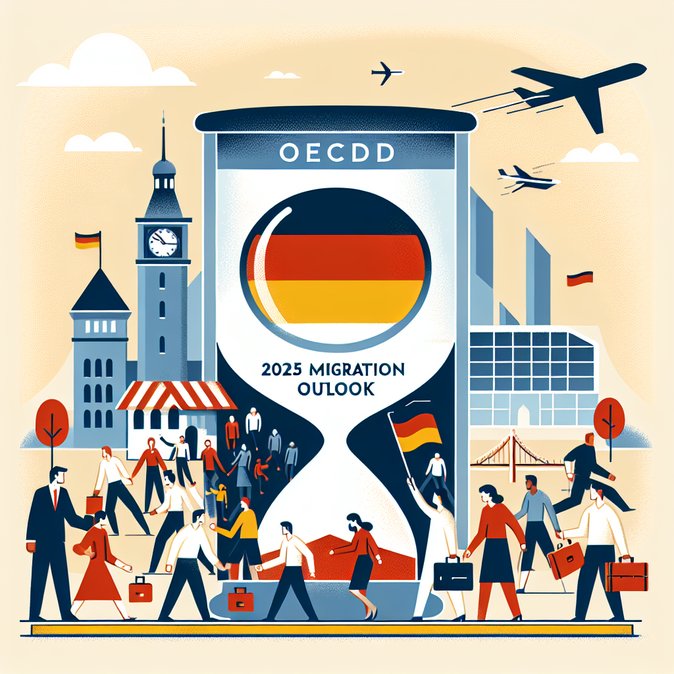
The OECD released its flagship International Migration Outlook on 3 November 2025, providing the most comprehensive cross-country data set on migration flows, labour-market outcomes and policy reforms among member states. The Germany chapter paints a mixed picture.
After the post-pandemic surge, permanent and long-term inflows into Germany eased to 586 000 in 2024, down 12 % on 2023, yet still 30 % above pre-Covid averages. Free-movement EU citizens made up 47 % of arrivals, but the share of labour-migrants rose to 11 %—the highest since records began—thanks largely to new “Opportunity Card” rules and simplified Blue Card salary thresholds. Humanitarian inflows fell sharply as the number of newly registered Ukrainians declined.
![OECD International Migration Outlook 2025 highlights sharp changes in German inflows]()
The report applauds Berlin’s 2024–25 reform package—five-year naturalisation, points-based job-seeker permits and recognition “one-stop shops”—but warns that processing capacity remains Germany’s Achilles heel. Average wait times for an appointment at Ausländerbehörde offices exceed nine months in several Länder, jeopardising Germany’s attractiveness compared with Canada and Australia.
For corporate mobility managers the Outlook’s data are gold. It shows intra-EU postings to Germany jumped 12 % in 2023 to 548 000, signalling growing audit risk under the Posted Workers Directive. Meanwhile, Germany issued 59 000 student residence permits—feeding graduate-hire pipelines—but only 11 300 temporary or seasonal work visas, a constraint for sectors such as agriculture and events.
The OECD urges Germany to roll out digital residence permits nationwide, expand English-language e-services and push Local Foreigners’ Offices to publish service-level data. Failure to do so, it warns, could negate the competitive gains of recent legislative reforms.
After the post-pandemic surge, permanent and long-term inflows into Germany eased to 586 000 in 2024, down 12 % on 2023, yet still 30 % above pre-Covid averages. Free-movement EU citizens made up 47 % of arrivals, but the share of labour-migrants rose to 11 %—the highest since records began—thanks largely to new “Opportunity Card” rules and simplified Blue Card salary thresholds. Humanitarian inflows fell sharply as the number of newly registered Ukrainians declined.

The report applauds Berlin’s 2024–25 reform package—five-year naturalisation, points-based job-seeker permits and recognition “one-stop shops”—but warns that processing capacity remains Germany’s Achilles heel. Average wait times for an appointment at Ausländerbehörde offices exceed nine months in several Länder, jeopardising Germany’s attractiveness compared with Canada and Australia.
For corporate mobility managers the Outlook’s data are gold. It shows intra-EU postings to Germany jumped 12 % in 2023 to 548 000, signalling growing audit risk under the Posted Workers Directive. Meanwhile, Germany issued 59 000 student residence permits—feeding graduate-hire pipelines—but only 11 300 temporary or seasonal work visas, a constraint for sectors such as agriculture and events.
The OECD urges Germany to roll out digital residence permits nationwide, expand English-language e-services and push Local Foreigners’ Offices to publish service-level data. Failure to do so, it warns, could negate the competitive gains of recent legislative reforms.











